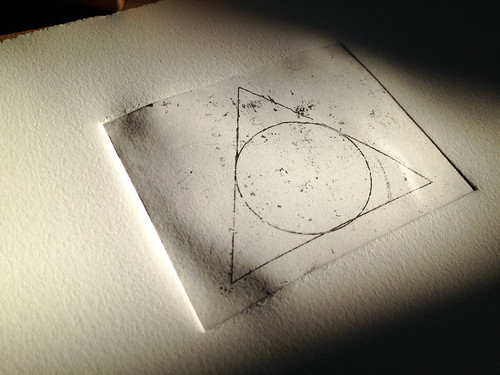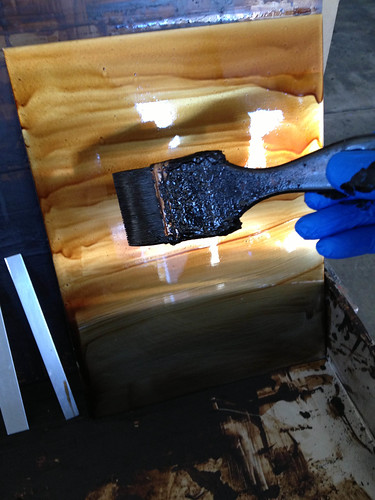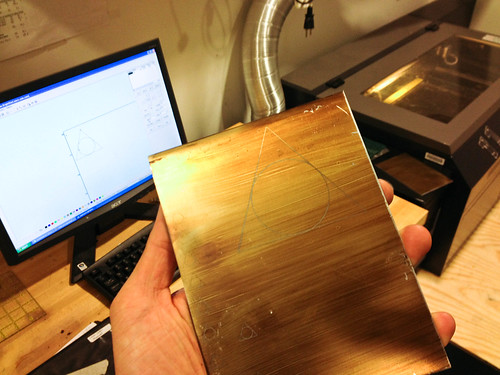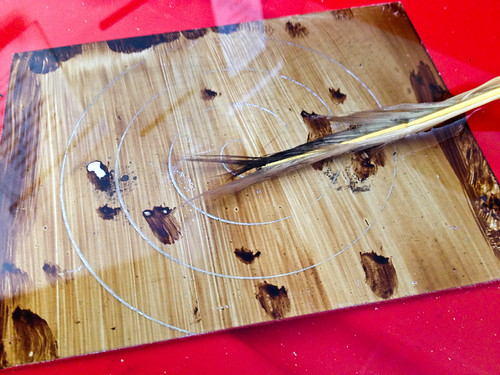Experiments in Etching
Posted . [ ]
I’ve been vaguely attending a printmaking class at Harvard. I can’t say I’ve commited myself, but I have learned the rudimentary basics of etching. Now, with a standard etching, you use a scraper or scribe or pointy nail, or whatever, really, to scratch away at a coating applied to smooth sheet of copper (or zinc, in this case). Those scratches expose the bare metal, which you “etch” (ah hah!) in an acid bath. You fill the resulting grooves with ink, wipe off the rest, mash some paper down, and there you go. That’s all well and good. After all, it’s how Dürer, Rembrandt, Picasso, and some other famous dudes made it happen. But since we’ve got a lot of toys to play with at the Media Lab, it seems a shame not to use them.
Last week I finally got round to running some experiments with the laser cutter and hard-ground that I’ve been meaning to get to.

A bunch of circles.
I used some simple Processing code to generate the shapes (at least, the circles and the spiral), and burned the resulting designs into zinc plates, before etching them normally. I was skeptical, initially, because it appeared that the laser had not burned down to the bare metal—and even a thin layer of ground would prevent the acid from doing its work. That didn’t appear to be a problem, though, once I dipped them in the nitric acid. Even so, I wasn’t convinced until I actually pulled a print. They came off surprisingly nicely.
I daubed out a few of the artifacts that were left in the ground from its various journeys from Harvard to MIT and back, but left most of the them (you can see the aphaltum in the nitric acid bath).

Spiral. The scratches are just from the ground being worn off in the course of jouncing around inside of my bag.

Triangle.
The natural variation in the brush-applied ground varied the intensity of the etched line.

Applying the hard ground as normal.

Laser-etching a simple design into the ground.
Though I was concerned that the laser-burned line had not reached the zinc layer, you can see from the bubbles developing on the metal surface.

After some touch-ups, dipping the sucker in nitric acid. It stings a little.
Moving on
Working with the laser cutter was surprisingly unpredictable. The uneven nature of the hard ground meant that the laser melted through it somewhat irregularly, skipping areas with relatively more ground. The combination of hand-work and machine-guided precision is something I’d like to play around with more. Something definitely be worth experimenting with is the use of other ground materials that might give different results in the laser cutter.